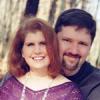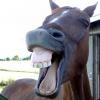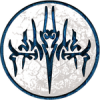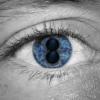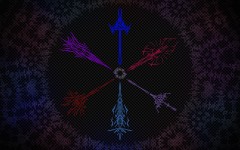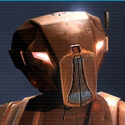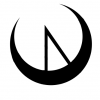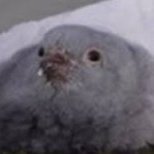Search the Community
Showing results for tags 'honorblades'.
-
I have this theory about the Oathpact and the reason for the torture of Heralds, the death of Honor, the reason for the Desolations, and the origin of Honorblades that I don't think anyone else has already stated. First, I'll start with a couple references from Mistborn: In Chapter 57 of Mistborn:HoA, Ruin says this: And throughout the book it's made clear that Preservation's sacrifice was only a temporary solution that caused him to give up his mind, but would eventually allow Ruin to escape his prison. Also, in chapter 81 of HoA, Vin was able to use the power of Preservation to push back against Ruin causing her divine body to tremble in pain and agony and eventually die. I know Vin didn't trap Ruin this way, but I'm just pointing out that she hindered Ruin and that fighting a god causes pain - at least when the gods are so opposed. To me, this sounds a lot like the Oathpact. It's called a bargain, instead of a pact, but they mean almost the same thing. There is pain involved. A god must give of themself. A god eventually dies as a result. A god is trapped/imprisoned or hindered in some way. It's a temporary solution. Now, what if Honor and the the Heralds figured out a way to trap (or at least hinder) Odium and make it closer to permanent? Instead of Honor suffering agony for thousands of years (just like Preservation), dieing, and Odium eventually escaping (or regaining full power), the Heralds agreed to endure the pain in place of Honor (how this was accomplished will be discussed below). And what if by doing so, they prevented/delayed Honor's death? There was some kind of bargain (Oathpact) between Honor and Odium that trapped/hindered Odium temporarily, but caused Honor to die, after a few thousand years of agony, in the process. Afterall, would it not be honorable to give up your life to save the lives of the entire world? However, Odium was tricked because of the intervention of the Heralds (this might be considered dishonorable though, so Honor would not be involved in the trick). Odium still escaped his prison (or regained his full power) every few thousand years and it caused a Desolation. He is defeated and re-imprisoned; the Heralds return to the place of torment; and Honor still lives as a result. Now, I know Taln was still being tortured after the "last" Desolation, but what if that wasn't enough to save Honor's life this time, so he died or splintered. There is speculation that this is what caused the Recreance. Finally, I think this original Oathpact is what forged the Honorblades - their origin being hidden in plain sight. Honor had to give of himself to trap/hinder Odium, and the Honorblades are the physical manifestation of Honor's power - much like the Mist is the physical manifestation of Preservation's power or Atium is Ruin's. These Honorblades were given to the Heralds to grant them great power during the eventual escape of Odium. But in the process, because they held pieces of Honor's "body," they endured great torture when they were in the place of torment. I believe that place of torment is one and the same as Odium's prison. Holding an Honorblade and being in Odium's prison at the same time is excruciatingly painful, but it saved Honor's life - until the Heralds (except for Taln) failed to return the last time. Any thoughts, flaws, additions? Edit: modified for clarity and to address some of the comments below
- 12 replies
-
9
-
- cosmere
- preservation
- (and 9 more)
-
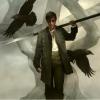
Which Radiant wielding an Honorblade would you like to see
Gyth posted a topic in Stormlight Archive
The latest Q&A someone asked: Q: Will a Radiant using an honorblade get those surges, too? A: Yes, "it is possible to get multiples." So what surge combo would you want to see? It may be kinda early for this questions considering we don't know a whole lot, but lots of cool implications. Or dangerous baddies. -
Hey guys, first post and first topic here. I was reading all of the awesome theories here, combined with a Stormlight Archive re-read, and had an interesting thought. Tell me what you guys think. Just a heads up, I didn't exactly do my due diligence with the WoB quotes. I'm quoting mostly from memory, but if you guys think there is potential to this theory then I'll come back and flesh this out with links quotes and such. Okay, so we have WoB that, on Roshar, Nightblood behaves very similarly to Shardblades. I think there is more to it than that. I think Nightblood behaves similarly to an Honorblade. (This may already be the prevailing theory, but I don't know if there is actual WoB to that effect.) For one, Honorblades have more in common with Nightblood than they do with Shardblades. Honorblades are actual physical objects that are heavily invested; same as Nightblood. Shardblades, however, are Spren, which are mostly cognitive entities, that are mimicing the effects of Honorblades. Between Honorblades, Shardblades, and Nightblood, Shardblades are the odd ones out. There is also the obvious similarity in their destructive potential. Honorblades and Nightblood are all very powerful tools. This is the superficial similarity that everyone makes and takes for granted. After that conclusion is reached, it's easy to stop thinking about it. But what if the Honorblades made the Heralds instead of the Heralds simply being matched with the Honorblade that best suited them? In The Way of Kings CHAPTER 18: HIGHPRINCE OF WAR, there is an interesting piece of information. That sword of retribution line really caught my eye. I guess it's a "what came first, the chicken or the egg" dilemma, but what if Nalan, who's Divine Attributes are Just / Confident which could easily lead to Retribution, became that way by holding the Sword of Retribution rather than the nameless Honorblade that Nalan wields having become known as the sword of retribution simply because it was Nalan wielding it? I propose that the Honorblades are so heavily invested that they have a sort of Intent of their own, much like Shards of Adonalsium, that shapes the personality of their bearers. For example, if Jezrien and Nalan had initially been given each other's Honorblades, then perhaps Jezrien would be Just / Confident and Nalan would be Protecting / Leading. This is where Nightblood comes in. Nightblood, like Honorblades, consumes Investiture in order to fuel the powers it uses to perform its Command. I'm proposing that, on Nalthis, Honorblades would have their own Commands. In this case, "Command" is what Nalthians call "Intent." In fact, I believe Vasher explicitly describes the process of giving a Command as visualizing the intent behind the Command. In other words, endowing something with an Intent. So if, on Roshar, Nightblood is using Investiture to perform its intent, that would mean that "Destroy Evil" would translate into an unknown Primary and Secondary Divine Attribute. This is a rough draft of a theory, but I hope with some input from the community it can be fleshed out and formalized into a working theory to describe the relationship between invested objects, Intent, and Commands.
- 9 replies
-
10
-
- honorblade
- honorblades
-
(and 8 more)
Tagged with:
-
I have a theory I'd like to throw out there for discussion. I believe that Honor made the Honorblades work for anyone that could pick them up purposefully. So that the burden of being a Herald could be passed on to others and the Oath Pact could be maintained even after one of the Heralds broke under Odium's torture. This could also potentially support the theory that the "Madman" that is currently holding that position of the Herald of War is not the original Talenel'Elin, though I'm not entirely convinced that he isn't Talenel'Elin. In addition, maybe the Honorblades are not inherently inefficient in their use of Stormlight, but that the wielder must speak something akin to the First Ideal to be awakened to Heraldom and become a better conduit for Investiture. I say these things because it seems very shortsighted of Honor to place such an important task in the hands of ten men and women, who despite being immortal, still suffer from the pains of mortal beings. So there you have it! Please discuss ~sbi
- 3 replies
-
- honorblades
- heralds
-
(and 3 more)
Tagged with:
-
On Page 912 of Words of Radiance (my brother has the book so I can't give an exact quote until he gives it back), Taravangian says, "One of the Honorblades has been taken." Szeth replies, "Another one of the seven?" (Taravangian is lying though.) Let's do some super easy math. The Shin have the Honorblades. There were 10 Honorblades. Taln never relinquished his blade, so the Shin would only have 9 Honorblades. They gave one of the 9 to Szeth, to make him Truthless. That should leave 8 Honorblades. But Szeth says that the Shin only have 7 Honorblades. One of the Honorblades is unaccounted for. Where is it? Was there another Truthless? (Unlikely, because Szeth said in The Way of Kings that the Stone Shamans would be able to get his Honorblade back if he died.) Or did someone take it? And if so, who has the unaccounted for Honorblade? (It would be really interesting if Helaran's blade was the missing Honorblade.)
- 37 replies
-
1
-
- shinovar
- honorblades
-
(and 2 more)
Tagged with:
-
So, as I expect most of you did, I concluded fairly solidly as I read that Szeth held an Honorblade (likely Jezrien's) and that was the source of his surgebinding ability. There are a number of passages to put that on a pretty strong foundation. Perhaps most notably, Syl tells Kaladin that she "thinks" that Szeth's former blade is an Honorblade and that it was the source of his abilitries. And then I read this WoB from the San Diego signing: source Then I recalled reading where Nalan told Szeth that he had died long enough to break the bond to his blade. I thought to myself: I have arrived at a few possibilities here: 1) Brandon misunderstood the question and/or mispoke/tricky-spoke. 2) Talenelat misunderstood Brandon's answer. or 3) Szeth actually did not have an Honorblade and Syl was/is mistaken. While I am leaning towards door number 1) or 2), I find door number three rather compelling. Here's why: 1) Szeth leaked Stormlight like a sieve. He needed to consume far more Stormlight than Kaladin. 2) We never saw Szeth's blade shift to better suit his situation. 3) So far, we have no indication that the Heralds had shardplate and Szeth indicated that he could not use plate and effectively surgebind (seems pretty obvious that he would suck out all the Stormlight from his gemstones that powered the plate). For at least those three reasons, it seems that each KR (at least modestly progressed in the ideals) was more powerful than the Herald associated with their order. Now, could perhaps the proper Herald wield their Honorblade in a more Stormlight efficient manner? Could they actually have a form of plate which pops in and out fairly instantaneously? Could Jezrien's Honorblade change shape according to Jezrien's desires/needs while using it? Sure. It is quite possible that we simply have not had the opportunity yet to see these things. But I find it compelling nonetheless. Even if all these things were in play for the Heralds, is the only functional difference between the Heralds and the KR then the Heralds' funky immortality? Let's hash this out a bit. Could there still be some life in the idea that Szeth's blade may actually have been the third type? Parting thought, if Szeth's blade is an Honorblade: Could the three types of blades be the Honorblades, the dead KR blades, and the vital KR blades?
- 43 replies
-
- szeth
- honorblade
-
(and 3 more)
Tagged with:
-
Previous commentary has assumed that the Honorblades grant a rightful user the ability to use only the surges associated with the Herald whose Honorblade it is. Szeth’s Honorblade, which most speculate was Jezrien’s, gave Szeth Windrunner powers, but (as far as we know) did not grant him the ability to bind other surges. Is each Herald likewise limited to bind only certain surges, based on their respective Honorblades, or do the Blades grant the Heralds the ability to bind all ten surges? Alternatively, do the Heralds possess some inherent power, either derived off-world (where some in this forum believe the Heralds originated) or imbued as a splinter of Honor’s power? The text supports the theory that the Honorblades granted the Heralds access to all ten surges. Kalak observes in the WoK Prelude that “ [Honorb]lades were weapons of power beyond even Shardblades. They were unique. Precious.” Presumably Kalak meant that Honorblades’ ability to grant surgebinding powers elevated them above Shardblades. It’s odd that Kalak viewed Shardblades as actual weapons. Shouldn’t he have known that they were simply a form taken by each KR’s bonded spren? And, knowing that, shouldn’t he have realized that the nahel bond granted each KR powers equal to an Honorblade? Unless for Heralds the Honorblades, unlike the nahel bond, granted the power to bind all ten surges. When normal humans like Szeth use the Honorblades (assuming one could call Szeth “normal”), they were limited to the surgebinding abilities of the Herald whose blade it was. Ishar feared what might happen if each KR had access to all ten surges: "But as for Ishi’Elin, his was the part most important at their inception; he readily understood the implications of Surges being granted to men, and caused organization to be thrust upon them; as having too great power, he let it be known that he would destroy each and every one, unless they agreed to be bound by precepts and laws.” [“Words of Radiance,” Chapter 2, page 4, emphasis added.] Ishar must have felt that “organization” was necessary to preclude men from rivaling Heralds’ power. Otherwise, why bother? A KR already has power over other men. Ishar’s concern must be for the Heralds. Ishar’s fear was sufficiently great that he would “destroy each and every one” if each individual KR’s surgebinding ability were not limited. To leave even a few KR with the same full abilities as the Heralds would inevitably invite conflict between the KR and the Heralds. It is unclear whether the foregoing epigraph refers to Ishar destroying each Radiant or each spren, since the spren were the basis of the KR’s power. And we have discovered that the spren, like men, also had “precepts and laws.” Further, the antecedents to the various pronouns (“them,” “one,” they”) are equally unclear: the “them” does seem to refer to men, but the “one” and the “they” could refer to either men or spren. From Ishar’s perspective, however, the result would be the same – the KR would cease to exist. That each KR Order chose a “patron” Herald does not undermine this analysis. The epigraph of WoR Chapter 37 (“Words of Radiance” chapter 13, page 1, emphasis added) states: "Now, as each order was thus matched to the nature and temperament of the Herald it named patron, there was none more archetypal of this than the Stonewards who followed after Talenelat'Elin, Stonesinew, Herald of War: they thought it a point of virtue to exemplify resolve, strength, and dependability. Alas, they took less care for imprudent practice of their stubbornness, even in the face of proven error." The choice of patron Herald was based on personality, not surgebinding power. This passage says nothing about Taln’s particular surgebinding abilities. That again suggests that each Herald had the ability to bind all ten surges. It is possible that the Stone Shamans taught Szeth how to use only the Windrunner surges and that humans, if properly taught, could use the Honorblades for all of the surges. That will make Kaladin’s possession of Szeth’s former Honorblade very interesting…unless the Stone Shamans take it from him. I do think Heralds also have inherent power – Taln’s catching the darts with superhuman quickness (assuming it was Taln). But the power to bind all ten surges comes from their Honorblades. I will discuss the use of Honorblades and stormlight, which another thread has already addressed, on another day.
- 8 replies
-
2
-
- honorblades
- shardblades
-
(and 2 more)
Tagged with:
-
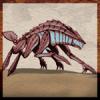
Honorblades Stormlight Background
Awesomeness Summoned posted a gallery image in Stormlight Archive Art
-
2
-
- honorblades
- heralds
-
(and 2 more)
Tagged with:
-
-
Did the Heralds have Dawnshards or Honorblades, or are the 2 same? And why do people say that Szeth has an Honorblade?
- 5 replies
-
- honorblades
- shardblades
-
(and 1 more)
Tagged with:
-
Not sure if this has cropped up, but what are people's opinions regarding the Pareshendi having possession of the honorblades? Two quotes: and from Eshonai's reading: Two sentences is not much, but the same feature is described. And the environment appears to be similar. The prelude's description sounds like it not necessarily much different at that point in time to the environment now.
- 6 replies
-
3
-
- honorblades
- eshonai
-
(and 1 more)
Tagged with:
-
In WoK, we encounter three types of Shardblade: Honorblades - Owned by the Heralds who are bound by the Oathpact. Doesn't turn owners into Lighteyes. Disappears when owner dies. Seems to be permanently bound to the owner. Can be summoned from thin air. "Radiantblades" - Once owned by Knights Radiant. Now owned by a number of Lighteyes. Appears when owner dies, and can be taken by another person. Can be summoned from thin air. "Truthlessblades" - Found in Shinovar. Owned by Shin warriors who become Truthless and therefore honor-bound to follow the bearer of their Oathstone. These blades light their owners' eyes, but only while being held. Can be passed to another owner when the current owner dies. Can be summoned from thin air. These blades have a few things in common. For one, they can all be summoned. I'm assuming Honorblades also require ten heartbeats before appearing, just like the other two types. Also common among these blades are their magical cutting and killing abilities. Whatever else they might be, all Shardblades are deadly weapons. Here's the story behind the theory I'm about to discuss (in spoiler tags since it's not really necessary): So let's start. All things in Roshar have spren, which I believe are Cognitive entities on Roshar that have "wavefunctions" and that might (though not always) be visible. We've already seen spren that have something to do with one of the Shards: Honorspren, spren who are attracted to honorable people. Honorspren are special because they grant powers even without being "trapped" in a fabrial. The powers that Honorspren grant all have something to do with binding things together. My theory is about a spren for another Shard on Roshar: an Odiumspren. I think Odium has a Shardic Intent that is the opposite of Honor's. Simply put, Odiumspren would grant people the power to divide things. What magical entities have we seen on Roshar that can divide things very, very well? Why, Shardblades, of course. That's why I think all Shardblades (including Honorblades) are Odiumspren. *** start of wild, base-less speculation *** The ten heartbeats requirement is a clue. From Geranid the Ardent, we know that spren have quantum dynamic properties. I think Geranid's Interlude chapter was meant to show us that spren "wavefunctions" collapse in the Physical realm when certain measurements are made. For flamespren, just measuring the size already makes them stop changing size, shape, and luminosity. Counting ten heartbeats is another act of measurement, and combined with an intent to summon, I think this collapses the wavefunction of an Odiumspren bound to a person, making it appear in the Physical realm as a magic sword. Honorspren like Syl don't really make people more honorable, but instead reward honorable actions with power. Similarly, Shardblades/Odiumspren don't really make people more hateful or selfish, yet once a Shardbearer starts feeling odious emotions, killing suddenly becomes a lot easier. This "odium-based enhancement" is what Szeth experiences whenever he becomes particularly angry with an assassination target, and it's possibly connected to the Thrill felt by the Alethi in battle. I think Odiumspren feed on odium to boost Szeth's Lashing ability, the same way Syl feeds on Kaladin's honorable acts to boost his own Lashings. And it doesn't even have to be in sword form. Looking back at the assassination of King Hanavanar, Szeth was even more deadly when he started irrationally blaming the king for his own actions, even though he let go of his Shardblade mid-fight. I think the Odiumspren bound to him was still powering his hatred even in its non-collapsed form. One apparent difference between Shardblades and Honorspren is that Honorspren are sentient and humanoid while Shardblades are not. I'm speculating that the sentient (probably humanoid) part of Odiumspren only manifests in Shadesmar, and that it is this aspect of the Odiumspren that feeds on the odious thoughts of people. I believe we'll be seeing the "true" form of Odiumspren once the characters start travelling around Shadesmar in future books. Also, you know how the Heralds were tortured in between Desolations? I think I know who the torturers were: the true forms of their own Honorblades. *** end of wild, base-less speculation *** So, that's my theory. Later I would like to theorize further on why the Honorblades were thus named, why Szeth isn't a permanent Lighteyes, and why Hoid claims that Lighteyes have a "good reason" to rule. But first I want to see if my main theory contradicts what we already know from WoK or WoB. If there's a major flaw in the theory, please point it out right away. Edit: Since my speculations and arguments regarding this theory span multiple posts, and since some people gave interesting arguments against the theory, I guess I might as well link to those: Speculation: The nature of Voidbinding, Honorblades, the Oathpact, and the founding of the Knights Radiant Speculation: The history of the genetic Lighteyes effect, and why Szeth isn't Lighteyes Counter evidence: Szeth isn't bound to a spren Counter evidence: Different spren are either from Honor, Cultivation, or both Counter evidence: Amaram's Shardblade has a gem on its pommel Counter evidence: Shardblades don't always need ten heartbeats to appear Counter evidence: Brandon likes Shardblades A summary of things explained by the Shardblades are Odiumspren theory Further similarities between spren and Shardblades Edit: I still think that Shardblades could be spren, but since some people seem absolutely convinced that they must be Physical objects, I'm going to offer a compromise by proposing instead that Shardblades are objects powered by odiumspren (which would reside in the gemstone attached to them).
- 100 replies
-
1
-
Okay, so I have a few theories that I want to propose. Some of them may be RAFO, and some are speculation (not necessarily theories) but I find them interesting and hope someone else does too. First. Are Elhokar and Sadeas in cahoots? Think about it, when Dalinar is talking to Sadeas and the king (Chapter 50) Elhokar is very insistent on Dalinar accepting Sadeas's bridges. It sounded like they were maneuvering him. Sadeas is always by the king, whispering in his ear, who is to say they had a way to get rid of Dalinar? I know in the early chapters (chapter 18) Elhokar is very foreboding about Dalinar, comparing him to his father who went insane during his last years alive. Is Elhokar in cahoots with Taravangian in killing Dalinar? Dalinar may not notice because he is too naive. Speaking of Elhokar, who were the men at the beginning of the prelude Szeth sees talking to him? The fact that Elhokar hates it when people compare him is understood, but the fact he becomes severely irate is strange. Did he have something to do with Gavilar's death? And speaking of foreboding, what about in chapter 27, when Rock is praising Kaladin for his kata, he calls him "Master Brightlord." Did Syl tell him about it and Rock know that Kaladin was a true lighteyes? Second, at the beginning of chapter 4 a Reshi chul trainer who is being bled speaks of Shadesmar. He describes it the sun he sees as "dark and cold shining in a black sky." When Shallan enteres Shadesmar, the same dark sky and distant sun are described. So, one can extrapolate, that some, not all, people when they die see Shadesmar. Sanderson explains in an q & a on Barnes & Noble[1] that there are three main realms: the physical. the cognitive, and the spiritual. Shadesmar appears to be the cognitive, but it may be the spiritual. I firmly believe the Heralds are either reincarnate in the forms of Kaladin and Szeth; Shallan and Jasnah; and Dalinar and someone else. Kaladin is the first to find his spren (spren are accompaniment to Heralds). It may also be that these characters are the Radiants alive whom need shardblades (that turn into honorblades) because the Almighty tells Dalinar "the Radiants must stand again." About Syl, notice how Syl starts following Kaladin after he kills the shardbearer. It was the fact Kaladin did not take the shardblade that made him personify honor, which is why and when Syl followed him. Syl hates shardblades. Do all spren hate shardblades? It seems that is why the Horneaters can see them, because Horneaters don't have any shardblades. If they were honorblades, would that change anything? I think the "shards men once bore" were honorshards, as evidence by their glowing. Once the honor left the Radiants (aka, the Day of Recreance) the shards became "mundane." Without honor, the blades and plate could not act as they should. It is interesting to note that Szeth says in the prologue how you cannot surgebind while wearing plate, but in Dalinar's first vision we see (chapter 19) the Radiants could surgebind (hence, why they "fell" from the sky). Maybe if Kaladin could get into plate, he could surgebind? Also note that, as I speculated above, Szeth may be a Herald, or Radiant, reincarnate. If this is so, the reason he hasn't found his spren, unlike Kaladin, is because he acts without a key ingredient. I do not know what this is; it may be honor or something else. Speaking of Szeth's honor, in the prologue we assume Szeth became Truthless because of his belief in the voidbringers. Whether that belief manifested itself into a resistance, or was merely heretical to Shin religion is up to debate. When Gavilar said "find the most important words a man can say," did he mean the Radiants codes? (May be why the next book is "Words of Radiance" because Dalinar finds them). When the Almighty tells Dalinar to "unite them" who is he talking about? Is he telling whoever (it just so happens to be Dalinar) to unite Alethkar or is it something more than that. Does he mean unite the people of Roshar? Maybe. I think he means Dalinar, or whoever because he doesn't know who's listening, to unite the Lost Radiants into a new Knights Radiant. This would bring back honor to them, especially if they follow the Codes and the Radiants Codes, and allow them to surgebind with shardplate 'n' stuff. Essential, have the shards become honorplates and blades. So, stormlight infuses itself into the spheres at a definite point during a highstorm. This is evident when Kaladin is in the highstorm. If the stormlight infused spheres throughout the storm, in duration, the sphere Kaladin held would still be lit (because the highstorm was not finished when he blacked out). That being said, is it possible to surgebind during a highstorm? I understand the human body may not hold it or even it may become overloaded. If it is overloaded that raises the question can you control how much stormlight you breathe in? I know you can control how much breath you inhale, but do you also control the amount of the stormlight itself that enters? Even so, I wonder if Kaladin and Szeth have the ability to surgebind unlimitedly during a highstorm, as long as they stay safe. Now here is a tricky one. It is based on speculation from a reading Sanderson did from a draft of "Words of Radiance" before it was called that. The taping took place before Christmas of 2012. After you hear it, come back and I'll say something I've been thinking. [2] So Sanderson states that Parshendi are that way because they bond to a spren. He may change that later or he may not, but it is interesting to note that the Parshendi need the gemhearts. Why is that? Alethi assume for soulcasting, but what if it is for some kind of religious ceremony? Isn't it interesting to note that yes the Shattered Plains are expansive, but the Alethi and Parshendi have been battling for 6 years and still there are more and more chasmfiends. Adolin notes after the chasmfiend is dead in chapter 15 that there are spren coming from it. There is also moldy smell of blood of the chasmfiend, also of the Parshendi. Could the chasmfiends be Parshendi that have evolved into a hulking monster? Eshonai talks of different forms that form different bodies. Perhaps the most revered place in Parshendi is to become a chasmfiend? The chasmfiends may become uncontrollable and turn hostile, which is why the Parshendi don't have any in reserve. That's all I got! But stay tuned for more! References [1] http://bookclubs.barnesandnoble.com/t5/Fantasy-Science-Fiction/Post-Questions-For-Brandon-Sanderson-Here/td-p/354645/page/3 About halfway through (try ctrl + f and type "three;" it should be on there after a couple) [2] https://soundcloud.com/stringbean1982/brandons-reading Sanderson begins Stormlight talking about 8:53 and reading at 12:10

